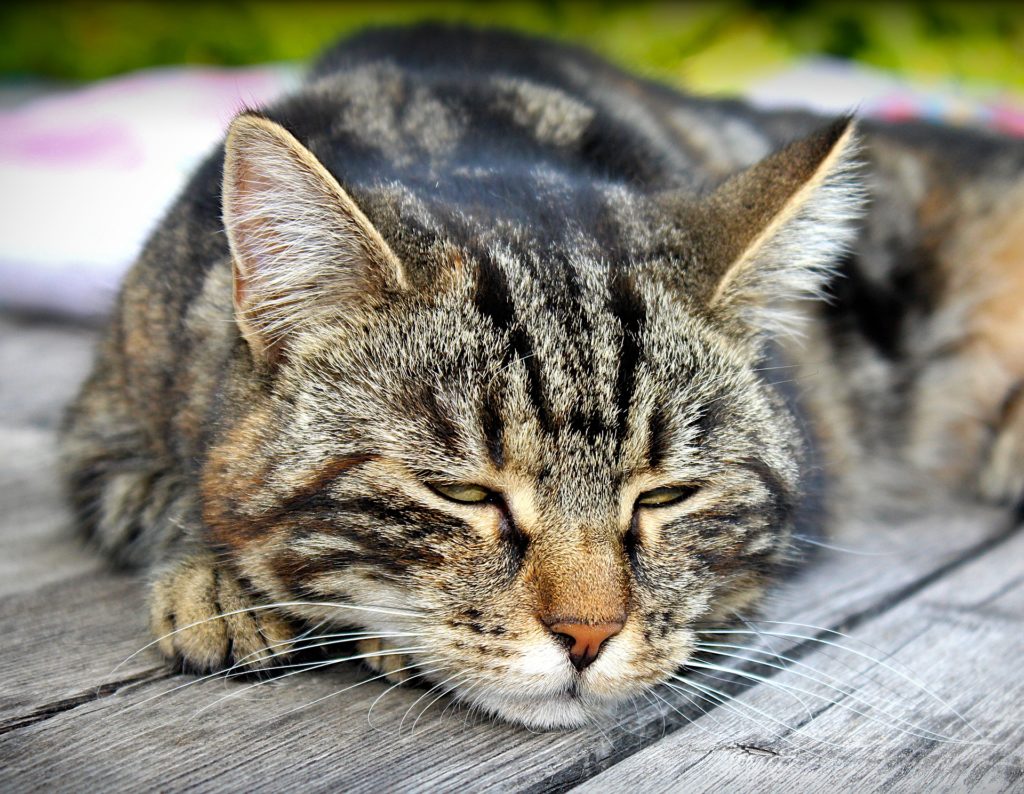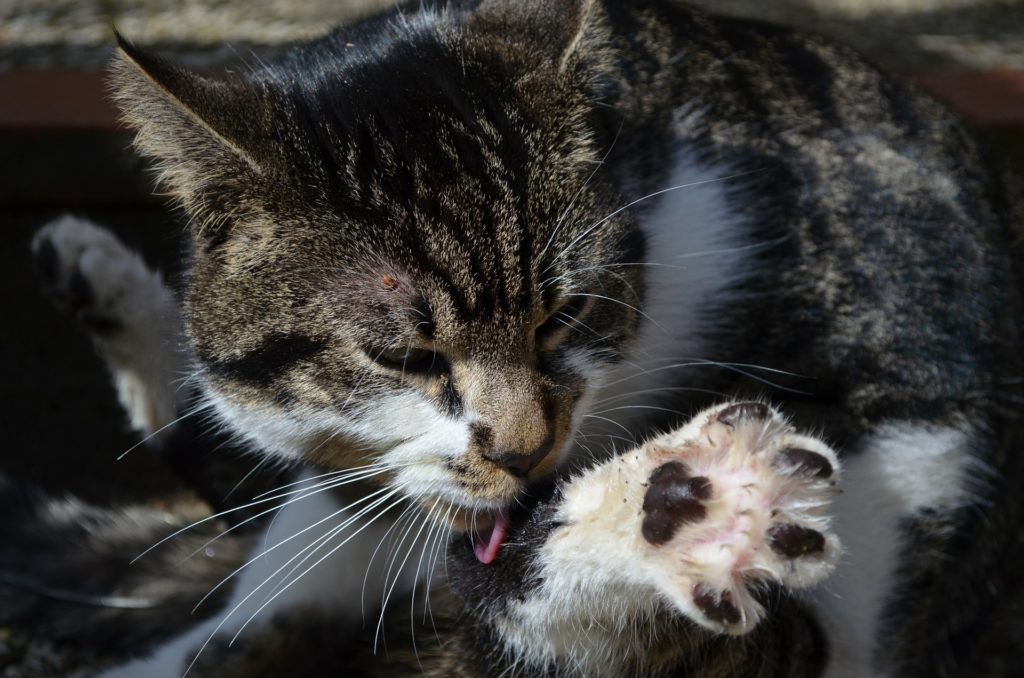Your cat has its tongue out because it is relaxing or because it has swallowed a foreign object and is having difficulty breathing.
Why does my cat always have its tongue out?
Cats have their tongues out all the time when they are sleeping or relaxing, but also when they are having trouble breathing because they have been bitten by an insect or have a foreign body lodged in their throat.
Many cat owners very rarely see that their cat has its tongue out. Whether or not this is a case for the vet needs to be closely monitored.
Your cat’s tongue may be hanging out when he is dozing off or when he is sleeping. This is often a sign of relaxation and you don’t need to worry about it.

They also use their tongues a lot when grooming, and it can happen that your cat gets distracted by eagerness or something else and simply forgets to put her tongue back in her mouth.

Some cats have no front teeth in their mouths, so their tongues often stick out of their mouths.
If your cat has smelled something in particular or likes a certain scent very much, cats often plead in order to perceive the scent more intensively. When doing this, your cat’s tongue often sticks out and sometimes seems absent. This is a quite normal behaviour, which horses, for example, also do very often.
But there are also situations where you should be very careful if your cat has its tongue out more often. Especially if your cat is breathing heavily or has problems eating and drinking. It may be that your cat has an insect bite or an allergic reaction. Inform your vet immediately of any such symptoms and seek veterinary advice.
Also, if your cat has its tongue out for an unusually long time and has never done it before, you should be careful. It could be that something swallowed has blocked the oesophagus or there is another foreign body in the mouth.
What is the function of the tongue for my cat?
The tongue is an important tool for drinking, eating, cooling down and grooming.
Especially when grooming, your cat depends on its tongue and it is a very useful tool. Due to the backwards arranged horn teeth, matted and knotted areas in the cat’s coat can be combed out like with a brush. It can also remove foreign bodies such as parasites or dead hairs from their fur.
But your cat’s tongue can also help a lot to cool down in the hot summer. Cats only have sweat glands in certain areas such as the paws, chin, nose or anus and can’t sweat as well as humans. By licking the fur on hot days, your cat provides its own cooling as the moisture evaporates.
Likewise, when licking the fur, the tongue stimulates blood flow to the skin, which stimulates the sebaceous glands, which then secrete fats. This makes the cat’s coat particularly supple and protects the coat from cold and wetness.
The cat’s tongue also serves as a very important tool for your cat when eating. With the help of the tongue and its horny teeth, which act as a kind of rasp, it can eat even the smallest pieces of meat. Should your cat only eat wet food and you wonder if it is harmful? We answer this and much more in our great article Cat only wants wet food, is it harmful?
In the same way, the cat’s tongue provides a lot of support when drinking. Cats build up a water column with their tongue. They bite into this column briefly and thus absorb the optimal amount of water with their tongue, which is shaped like a spoon.
How is a cat’s tongue constructed?
The cat’s tongue consists of many types of papillae on its surface. Some of them are responsible for the sense of taste and others for the transmission of stimuli to the nerve stations.
The cat’s tongue is very important for your cat. It has several helpful functions when drinking, eating or grooming and is irreplaceable for your cat.
The surface of the tongue consists of many types of papillae, of which the mushroom-shaped ones at the tip and body of the tongue are responsible for the sense of taste. The papillae in the throat area are also very important for your cat’s sense of taste. Many individual taste buds are built into the mucous membrane extending over the tongue.
The fact that the cat’s tongue feels very rough to us is due to the thread papillae, which are horn teeth arranged backwards. When drinking, small drops of liquid get caught on them and are delivered to the mouth. The thread papillae extend over the entire back of the tongue and their main function is to transmit mechanical stimuli to the nerve stations.
Down below we have summarized our most popular posts for you in a great overview:
- Why do cats groom themselves after eating?
- Cat does not like treats
- How do cats cool off in the summer?
- How to keep ants out of the cat food
- Cat only wants to eat
- Do cats like it warm or cold?
- Is there food envy in cats
- How do cats cool off in the summer?
- How long does open wet cat food keep?
- Strange cat comes again and again
Summary – Cat has tongue out
Your cat has its tongue out because it is relaxing or because it has swallowed a foreign body and is having difficulty breathing.
Why your cat has its tongue hanging out all the time can have several causes. For one thing, cats like to have their tongues hanging out while they are sleeping or very relaxed. But also when your cat wants to detect a certain smell better and starts to bark, your cat’s tongue can hang outside.
Caution is always advised if there are other symptoms besides the tongue hanging out, such as difficulty breathing or increased saliva.
This can indicate an insect bite in the inner mouth area and should definitely be examined by a vet. But also if your cat stops eating or drinks less water, this can indicate a foreign body in the throat area.
Your cat’s tongue has various functions and often serves as an important tool. Especially when grooming, it can easily loosen matted fur hairs with its horny teeth on the tongue and brush them out like a comb.
But the tongue can also be very helpful for cooling down in summer and helps to refresh the dog by licking the coat and the resulting evaporation of the liquid.
The tongue is also an important tool when eating and drinking.
The cat’s tongue consists of many types of papillae on its surface. Some of them are responsible for the sense of taste and others for the transmission of stimuli to the nerve stations.

